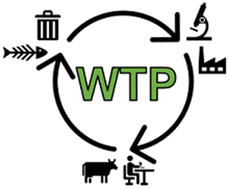A sustainable waste-to-protein system to maximise waste resource utilisation for developing food- and feed-grade protein solutions†
Abstract
A waste-to-protein system that integrates a range of waste-to-protein upgrading technologies has the potential to converge innovations on zero-waste and protein security to ensure a sustainable protein future. We present a global overview of food-safe and feed-safe waste resource potential and technologies to sort and transform such waste streams with compositional quality characteristics into food-grade or feed-grade protein. The identified streams are rich in carbon and nutrients and absent of pathogens and hazardous contaminants, including food waste streams, lignocellulosic waste from agricultural residues and forestry, and contaminant-free waste from the food and drink industry. A wide range of chemical, physical, and biological treatments can be applied to extract nutrients and convert waste-carbon to fermentable sugars or other platform chemicals for subsequent conversion to protein. Our quantitative analyses suggest that the waste-to-protein system has the potential to maximise recovery of various low-value resources and catalyse the transformative solutions toward a sustainable protein future. However, novel protein regulation processes remain expensive and resource intensive in many countries, with protracted timelines for approval. This poses a significant barrier to market expansion, despite accelerated research and development in waste-to-protein technologies and novel protein sources. Thus, the waste-to-protein system is an important initiative to promote metabolic health across lifespans and tackle the global hunger crisis.

- This article is part of the themed collection: 2023 Green Chemistry Reviews


 Please wait while we load your content...
Please wait while we load your content...